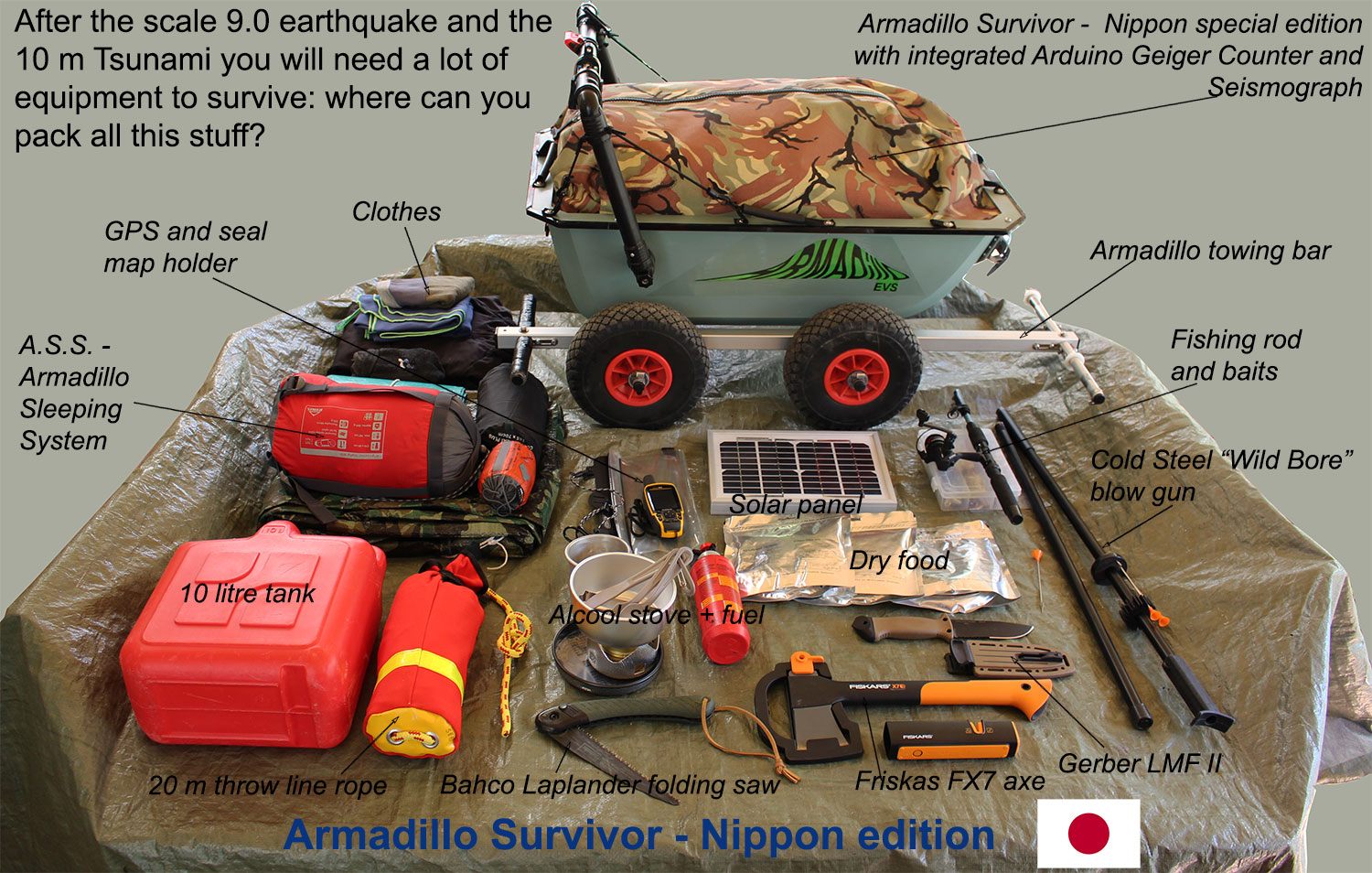Prepping & Self Rescue: the Japan next Big Quake
“That long and ominous silence has made a Tokai earthquake the most feared and anticipated in Japan. “The worst case is that Tokai, Tonankai and Nankai earthquakes occur simultaneously,” says Mr Kawata. “That would have a magnitude of 9.0. Independently, a Tokai earthquake could be 8.0.”
The government’s figures put the odds of a magnitude 8.0-plus Nankai Trough earthquake at 50 per cent in the next 20 years, 70 per cent in the next 30 years and 90 per cent in the next half century.”
Robin Harding and Steven Bernard – Financial Times, 17 May 2016
 After an earthquake and its consequent tsunami as feared/expected from the Japanese Government in the Tokay region, rescue and assistance will be very difficult and slow during the first days after the quake: in such an event every citizen should be able to self-support and self-rescue him/herself, its owmn family and (if possilble) its neighbours.
After an earthquake and its consequent tsunami as feared/expected from the Japanese Government in the Tokay region, rescue and assistance will be very difficult and slow during the first days after the quake: in such an event every citizen should be able to self-support and self-rescue him/herself, its owmn family and (if possilble) its neighbours.
In a scenario like this it is of main importance to be able to move through devasted areas by foot (roads and highways will be impassable, fuel for the cars will be not available) carrying the right equipment and the right quantity of food and drink water for surviving the first days/weeks after the disaster and, if possible, to leave the catastrophe zone.
Three tings are of crucial importance in order to face these problems:
- to select the right equipment;
- to choose the right mean of transport for your equipment;
- to have alternative escape plans
THE RIGHT EQUIPMENT
Here are six main groups of equipment more or less in order of importance that you will need in different moments of a “typical survival day”:
- First Aid
- Water
- Food
- Shelter/Clothing
- Comunication & Orientation
- Other equipment
THE RIGHT MEAN OF TRANSPORT
The right mean of transport should have the following characteristics:
- have a good capacity (volume) for transporting food, water and equipment sufficient for an extended period (many days or weeks);
- to be relatively light and compact;
- to be easily transportable and able to pass over harsh terrains (i.e. with strong e correctly sized wheels);
- to be man powered (i.e. man hauled);
- to be amphibious;
THE ESCAPE PLANS
This is one of the key points of success to leave a disaster area: think at different ways to escape from the dangerouse zone analyzing the different problems/facilities that each escape route will present along its way. Consider also the possibility to escape via water ways.



